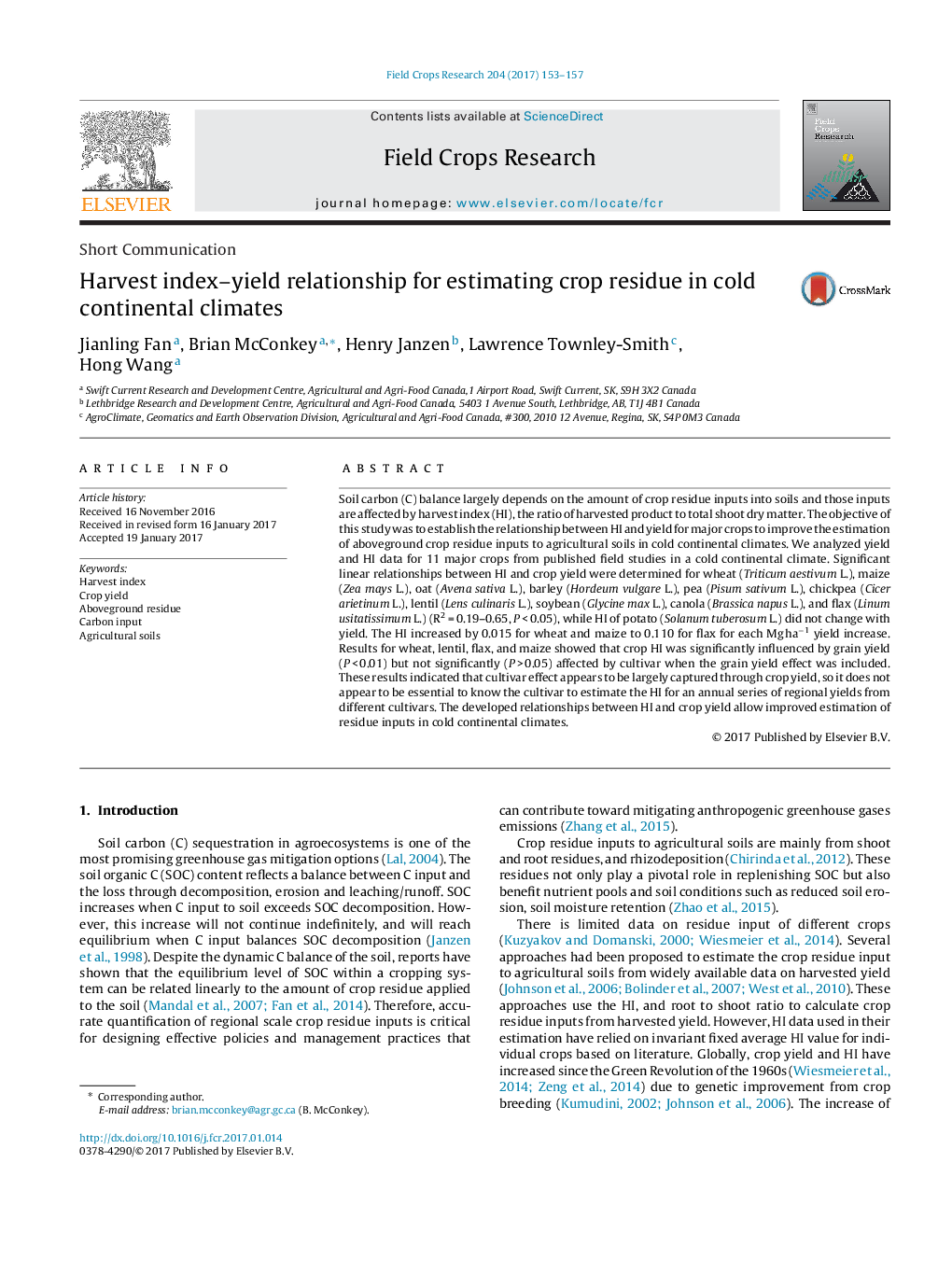| Article ID | Journal | Published Year | Pages | File Type |
|---|---|---|---|---|
| 5761628 | Field Crops Research | 2017 | 5 Pages |
Abstract
Soil carbon (C) balance largely depends on the amount of crop residue inputs into soils and those inputs are affected by harvest index (HI), the ratio of harvested product to total shoot dry matter. The objective of this study was to establish the relationship between HI and yield for major crops to improve the estimation of aboveground crop residue inputs to agricultural soils in cold continental climates. We analyzed yield and HI data for 11 major crops from published field studies in a cold continental climate. Significant linear relationships between HI and crop yield were determined for wheat (Triticum aestivum L.), maize (Zea mays L.), oat (Avena sativa L.), barley (Hordeum vulgare L.), pea (Pisum sativum L.), chickpea (Cicer arietinum L.), lentil (Lens culinaris L.), soybean (Glycine max L.), canola (Brassica napus L.), and flax (Linum usitatissimum L.) (R2 = 0.19-0.65, P < 0.05), while HI of potato (Solanum tuberosum L.) did not change with yield. The HI increased by 0.015 for wheat and maize to 0.110 for flax for each Mg haâ1 yield increase. Results for wheat, lentil, flax, and maize showed that crop HI was significantly influenced by grain yield (P < 0.01) but not significantly (P > 0.05) affected by cultivar when the grain yield effect was included. These results indicated that cultivar effect appears to be largely captured through crop yield, so it does not appear to be essential to know the cultivar to estimate the HI for an annual series of regional yields from different cultivars. The developed relationships between HI and crop yield allow improved estimation of residue inputs in cold continental climates.
Related Topics
Life Sciences
Agricultural and Biological Sciences
Agronomy and Crop Science
Authors
Jianling Fan, Brian McConkey, Henry Janzen, Lawrence Townley-Smith, Hong Wang,
